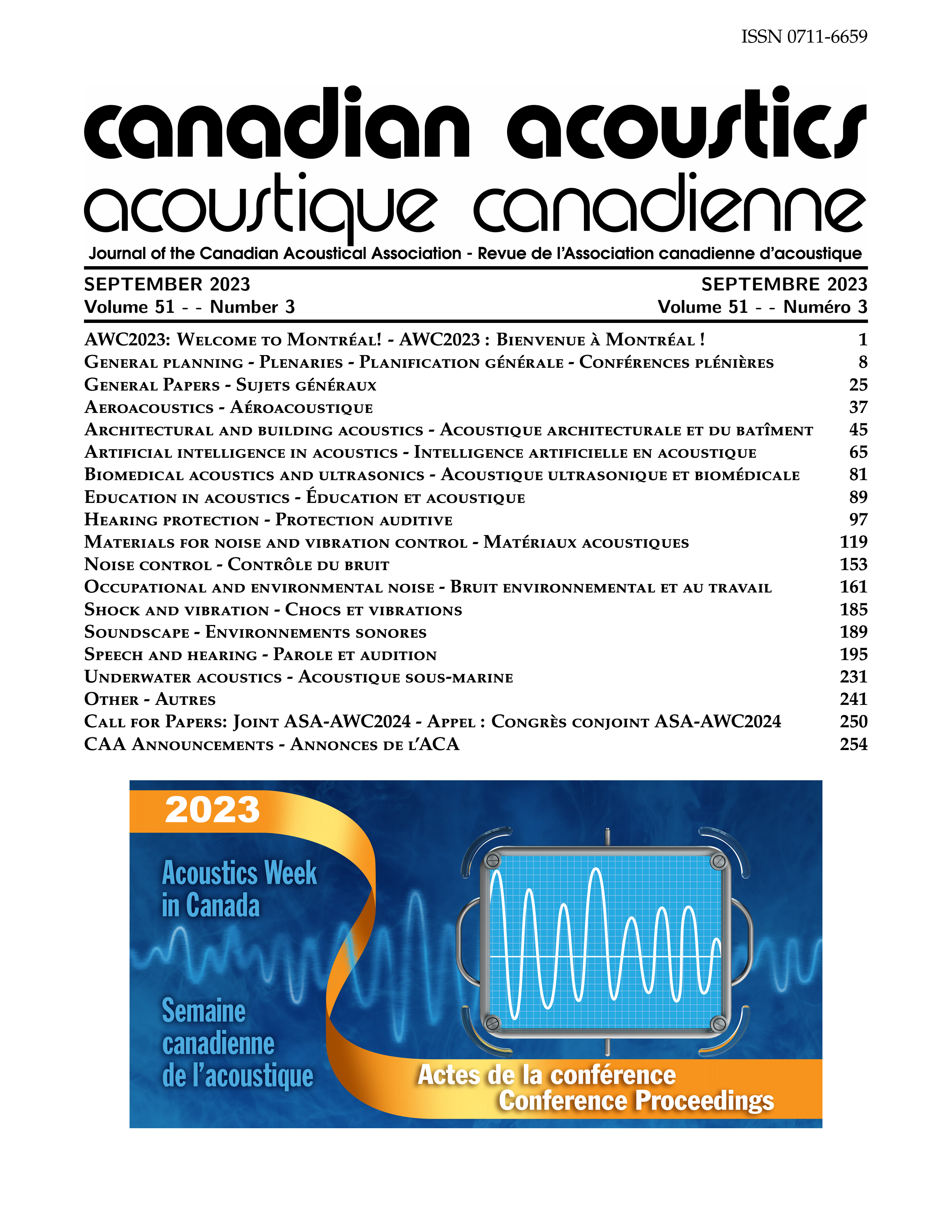Improving the Detection of Melodic Sequences Through the Addition of Inharmonic Frequencies
Résumé
Our ability to detect and discriminate between auditory signals is crucial to our daily lives (Gundy, 1961), and is required in auditory warning systems for a variety of safety critical devices (Stanton & Edworthy, 2019) —such as hospital alarms (Sanderson et al., 2006). Recent research has focused on harmonicity as a salient dimension in signal detection (McPherson et al., 2022). Inharmonic sounds tend to be more attention grabbing (Bonin & Smilek, 2016), while higher pitch frequencies are less likely to conflict with ambient noise. This suggests the introduction of high, inharmonic frequencies could improve detectability. To assess whether this indicates binding of the inharmonic tones or additional information increasing detection, we measured accuracy and response time in two-alternative forced choice (2AFC) tasks, whereby participants decided whether a melodic sequence played in noise ascended or descended. The sequence included either congruent, incongruent, or an absence of higher harmonics. We found that the tracking additional harmonics improved mean accuracy by 6% and reduced mean response time by 72ms relative to their absence. The stationary harmonics reduced response time by 74ms, but also reduced accuracy by 13% relative to their absence.The results suggest that the additional harmonics can speed up reaction time, regardless of whether they are congruent. However, the increase in accuracy for the tracking condition relative to the decrease for stationary implies that discrimination depends on congruency. Without this, they may be a source of distraction, erroneously drawing attention away from the signal instead of supporting it. Overall, this supports an information rather than a binding mechanism of facilitation. Future experiments will further explore the role of binding in detection by varying amplitude envelope between the signal and higher harmonics. We can then infer how they could be added to current alarms to improve detectability.Fichiers supplémentaires
Publié-e
Comment citer
Numéro
Rubrique
Licence
Author Licensing Addendum
This Licensing Addendum ("Addendum") is entered into between the undersigned Author(s) and Canadian Acoustics journal published by the Canadian Acoustical Association (hereinafter referred to as the "Publisher"). The Author(s) and the Publisher agree as follows:
-
Retained Rights: The Author(s) retain(s) the following rights:
- The right to reproduce, distribute, and publicly display the Work on the Author's personal website or the website of the Author's institution.
- The right to use the Work in the Author's teaching activities and presentations.
- The right to include the Work in a compilation for the Author's personal use, not for sale.
-
Grant of License: The Author(s) grant(s) to the Publisher a worldwide exclusive license to publish, reproduce, distribute, and display the Work in Canadian Acoustics and any other formats and media deemed appropriate by the Publisher.
-
Attribution: The Publisher agrees to include proper attribution to the Author(s) in all publications and reproductions of the Work.
-
No Conflict: This Addendum is intended to be in harmony with, and not in conflict with, the terms and conditions of the original agreement entered into between the Author(s) and the Publisher.
-
Copyright Clause: Copyright on articles is held by the Author(s). The corresponding Author has the right to grant on behalf of all Authors and does grant on behalf of all Authors, a worldwide exclusive license to the Publisher and its licensees in perpetuity, in all forms, formats, and media (whether known now or created in the future), including but not limited to the rights to publish, reproduce, distribute, display, store, translate, create adaptations, reprints, include within collections, and create summaries, extracts, and/or abstracts of the Contribution.


